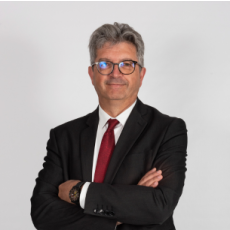Mecachrome is a precision engineering company based in France operating across the aerospace, motor racing, energy, and defence sectors - designing and manufacturing sub-assemblies for commercial and regional aircraft, helicopters, fighter planes, and business jets.
As a company whose DNA is in automobiles, what do you see as the main commonalities and differences with the aerospace industry?
The key difference between the two industries is the number of products manufactured. In automotive, we produce thousands of parts, while aerospace deals with hundreds. However, the distinction is not always as clear-cut when we consider the materials used in an aircraft, which also involve thousands of components. Despite their differences, the processes for producing a car and an aircraft can be similar, and many advancements in the automotive industry over the last 20 years could be beneficial if applied to aerospace manufacturing.
Another shared focus is safety. While aerospace has long prioritized safety due to the nature of air travel, the automotive industry has recently followed suit, adopting similar rigorous safety measures. Both industries also face the challenge of reducing their environmental impact, though aerospace benefits from a more experienced engineering community capable of handling these technological shifts.
How large is the aerospace portion of Mecachrome’s business, and is that changing?
Currently, about 70% of our business is in aerospace, with the remaining 20% in the automotive industry. Within aerospace, two-thirds of our activities are focused on aerostructures—producing parts for fuselage, airframes, and wings—while one-third involves engine components.
This distribution between aerospace and automotive has been consistent over the past two decades. While the share of each sector hasn't shifted dramatically, we continue to see the bulk of our operations anchored in aerospace, which reflects the ongoing demand and specialization required in that field.
Since joining Mecachrome in 2019, you have experienced a series of multiple shocks. What lasting impact has the Covid pandemic had on the company’s strategic direction?
The pandemic initially forced us to focus on survival; we saw our turnover cut in half almost overnight. The immediate challenge was securing enough resources to keep our essential operations, including production capabilities and personnel, intact. Unfortunately, we had to close some plants, which went against our industrial DNA—where we prefer to create rather than shut down operations.
Moving forward, we’re developing ways to be more resilient, such as our Focus Factory concept. This innovation consolidates all processes into a single, efficient system, reducing unnecessary transport, waste, and energy consumption. By focusing on this kind of sustainable industrial system, we aim to align better with both employee and public expectations.
What technological gaps need to be addressed for the industry to decarbonize and Mecachrome to meet its sustainability targets?
The major gap lies in electrical power, specifically in storing and transporting energy efficiently for aircraft. While mechanical systems for flight will likely remain necessary, the current electrical power technology is not advanced enough to replace traditional methods of providing the necessary airflow under the wings. Battery and energy transportation technologies are improving, but we’re not there yet. Several vehicle manufacturers are investing heavily in battery development, and once we overcome these technological hurdles, it will open the door to more sustainable aerospace solutions.
Our immediate goal is to reduce energy consumption in our plants by 10% annually, starting with Scope 1 emissions. We are working to shift half of our operations to the Focus Factory model, which could cut our carbon footprint in half. Convincing our customers and shareholders to support this transition is essential since this effort requires significant financial backing.
Which new technologies are you most excited about leveraging in 2024 as Mecachrome readies itself for the next generation of engines and aircraft?
We are focusing on both the engineering of new products and the revolutionizing of production methods. Right now, the way we produce aircraft is not sustainable, and that needs to change alongside product innovation. It's critical to design new aircraft with minimal environmental impact while also improving the production process to ensure it is as sustainable as possible. If we fail to address both aspects, we risk producing products that we cannot recycle or manufacture efficiently, which undermines the progress we’ve made in sustainability.
Automation plays a crucial role in consolidating various processes into a single, efficient production system. In aerospace, the supply chain is fragmented, which results in more trucks being used than people to machine parts. This inefficiency can be addressed through automation, similar to how it’s been done in the automotive sector. By automating processes, we can create a more competitive and environmentally efficient system that reduces unnecessary transportation and energy use.






